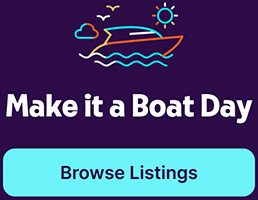Converting an inboard engine to an outboard one can be a daunting task, especially if you're a novice in the world of boating. However, with the right tools, a bit of patience, and this comprehensive guide, you'll be able to accomplish this task with relative ease.
Understanding the Basics
Before we dive into the conversion process, it's important to understand the basic differences between inboard and outboard engines. Inboard engines are installed within the hull of the boat, while outboard engines are attached to the outside of the boat, usually at the stern.
Outboard engines are generally easier to maintain, more fuel-efficient, and offer better maneuverability. However, the conversion process can be complex and time-consuming, so it's important to weigh the pros and cons before deciding to make the switch.
Pros of Outboard Engines
- Easy to service and maintain
- More fuel-efficient
- Better maneuverability
Cons of Outboard Engines
- Can be noisy
- May not be suitable for larger boats
- Can be expensive to purchase
Preparing for the Conversion
Before you start the conversion process, you'll need to gather the necessary tools and materials. This will include a new outboard engine, mounting hardware, and various hand tools. You'll also need to prepare your boat for the conversion by removing the existing inboard engine and making any necessary modifications to the hull.
It's also important to consider the size and weight of your new outboard engine. The size of the engine will impact the performance and handling of your boat, so it's important to choose an engine that is appropriate for your boat's size and weight.
Tools and Materials Needed
- New outboard engine
- Mounting hardware
- Hand tools (wrenches, screwdrivers, etc.)
- Marine sealant
Removing the Inboard Engine
Removing the inboard engine can be a complex task, so it's important to take your time and follow the manufacturer's instructions. You'll need to disconnect the engine from the propeller shaft, remove any attached components, and then carefully lift the engine out of the boat.
Once the engine is removed, you'll need to seal any holes or openings in the hull with a marine sealant. This will prevent water from entering the boat and causing damage.
Installing the Outboard Engine
Once you've prepared your boat, you can begin the process of installing the outboard engine. This will involve mounting the engine to the stern of the boat, connecting the engine to the boat's controls, and testing the engine to ensure it's functioning properly.
It's important to follow the manufacturer's instructions when installing the outboard engine. Improper installation can lead to poor performance and potential damage to the engine and your boat.
Mounting the Engine
The first step in installing the outboard engine is to mount it to the stern of the boat. This will involve drilling holes in the stern and attaching the engine with the provided mounting hardware. Be sure to apply a marine sealant to the holes to prevent water from entering the boat.
Once the engine is securely mounted, you can connect it to the boat's controls. This will involve connecting the throttle and steering cables to the engine. Be sure to test these connections before proceeding to ensure they are functioning properly.
Testing the Engine
Once the engine is installed and connected to the boat's controls, it's important to test the engine to ensure it's functioning properly. This will involve starting the engine and checking for any unusual noises or vibrations.
If the engine is functioning properly, you can then test the boat's performance on the water. Be sure to monitor the engine's performance and make any necessary adjustments to ensure optimal performance and fuel efficiency.
Conclusion
Converting an inboard engine to an outboard one can be a complex task, but with the right tools and a bit of patience, it's a task that can be accomplished by most boat owners. By following this guide, you'll be well on your way to enjoying the benefits of an outboard engine.
Remember, safety should always be your top priority when working on your boat. Always wear the appropriate safety gear and never attempt to perform any work on your boat while it's in the water.
Ready to Power Your Boating Business?
Now that you've upgraded to an outboard engine and are set to sail with enhanced performance, why not expand your reach and grow your boating business with Getmyboat? List your boat for free and tap into our global audience eager to book a boat just like yours. With Getmyboat, you'll not only attract new customers but also master your boat management and manage your payments with ease, all while enjoying the peace of mind that comes with tailored insurance coverage. List your boat today and set sail towards a more successful boating business!






